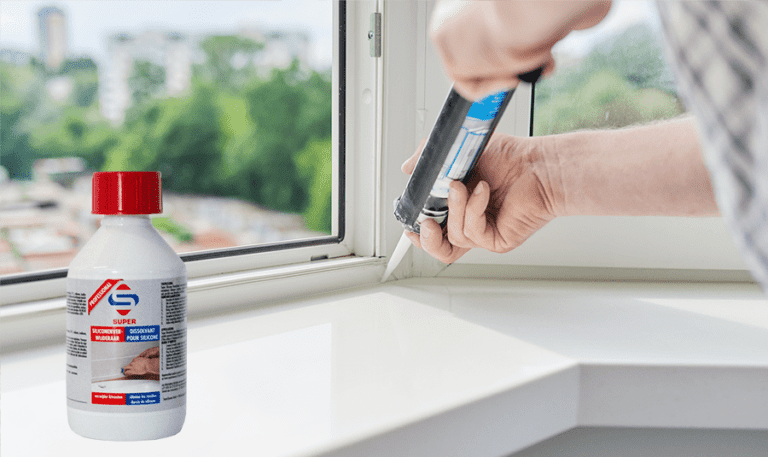Removing sealant from glass is a job that is sometimes necessary. It has started to mould or is coming off. Something needs to be done about it because the sealant edge looks less attractive. Often, removing sealant from glass costs people a lot of trouble. This is often because they do not have the right knowledge. After reading this blog post, removing sealant residue from windows will be a piece of cake. Our tips and tricks will help you get this job done!
Removing silicone sealant from glass
Removing silicone sealant from glass can be tricky. The glass can be damaged and often professionals perform this task. Removing it is not necessarily difficult, but it is important to do it the right way. Silicone sealant is mostly used in damp rooms with glass because of its moisture resistance. Nevertheless, it does happen that sealant gets mouldy. If this happens, you can remove the silicone sealant with a break-off knife and the Super Silicone Sealant Remover.
Step-by-step plan: removing silicone sealant from glass
Super sealant remover 250 ml
- Better adhesion of new sealant
- Easily removes sealant residues
- The best!
Kit removal is, simply put, cutting away the sealant edge. Despite looking so simple, removing sealant from glass is not. To get started, you will need a number of materials, namely:
- A Stanley knife or a kit scraper
- Number of spare blades
- A bottle of Super Silicone sealant remover
Here are 5 steps to help you remove silicone sealant:
- Provide a sharp stanley knife and slide it out as far as possible.
- Then press the knife firmly against the side of the sealant. This may be done firmly. Then do it to the other side.
- Now you can pull off the sealant.
- Remove any remaining sealant residue with Super Silicone Sealant Remover.
- Let the silicone sealant remover soak in until the residues soften and finally remove any remaining silicone residue with a cloth.
Removing acrylic sealant
An important difference between silicone sealant and acrylic sealant, is that you often don't need to remove acrylic sealant completely. You only need to touch up this type of sealant in most cases. This is because acrylic sealant is less often placed in damp environments, such as bathrooms, kitchens and near glass. In contrast, acrylic sealant is much more often used for grouting and gaps, as in:
- Door frames
- Window sills
- Panelling
- Stairs
- Skirting boards
- Walls
- Plasterboard and corrugated sheets

Step-by-step plan: acrylic sealant removal
The nice thing about acrylic sealant is that you don't always have to remove it. Touching up acrylic sealant is often enough. Do you still need to remove acrylic sealant? Then use this step-by-step plan:
- Use a sharp stripping knife and extend the blade as far as possible.
- Durk the knife against the surface of the sealant. All the time, cut as straight as possible and with the same pressure. This will save work later.
- Pull off the acrylic sealant.
- Remove any remaining residue with sealant remover and finally go over it with sandpaper.
So with our step-by-step instructions, it is possible to remove sealant from glass yourself. To do this, however, it is important to follow our steps precisely and use SuperCleaners's sealant remover.
Get to work removing sealant from any type of glass
Hit the gas on your job and get off to a good start with kit removal from glass. Chances are that you have been ignoring this cleaning job for some time, because it seemed like a difficult task. Check below which online outlets you can buy the powerful sealant remover from and follow one of our step-by-step plans carefully. Soon you will have clean sealant edges again! Contact SuperCleaners or one of its sales partners if you have any questions about how the sealant remover works.



